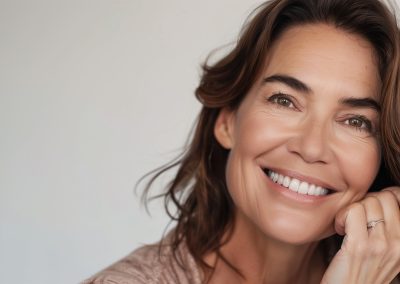
Understanding and Treating Fine Lines and Wrinkles
Fine lines and wrinkles are a natural part of the aging process, but they can often appear prematurely or become more prominent due to various factors. They occur when the skin loses its youthful structure and elasticity. Understanding the root causes allows us to select the most effective strategies for prevention and correction.
🧐 What Causes Fine Lines and Wrinkles?
The formation of lines and wrinkles is primarily due to two categories of factors: intrinsic (internal) and extrinsic (external).
1. Intrinsic Aging (Natural Process)
This refers to the biological, genetic, and hormonal processes that naturally occur over time:
2. Extrinsic Aging (Environmental Factors)
These are external factors that accelerate the aging process, often making wrinkles appear earlier and deeper:
✨ Effective Treatment Options
Addressing lines and wrinkles requires a multi-faceted approach focusing on prevention, correction, and structural support.
🧴 Daily Skincare Solutions (Topicals)
High-performance ingredients are crucial for building a defense against aging:

💉 Professional & In-Clinic Treatments
For established lines and deeper wrinkles, clinical procedures offer significant corrective power:
💡 Our Recommendation
A long-term strategy that combines diligent daily sun protection and active topicals (Retinoids and Vitamin C) with periodic injectable treatments (Botox for movement lines, Fillers for volume loss) offers the most comprehensive and effective plan for achieving and maintaining smoother, firmer, and more youthful-looking skin.
Ready to smooth your complexion? Book a consultation with our experienced specialists to create your personalized anti-aging and wrinkle treatment strategy today.
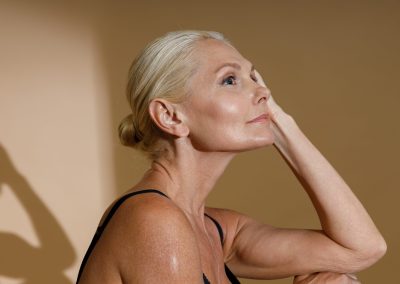
Lifting the Issue: Understanding and Treating Skin Laxity and Sagging
Skin laxity, often referred to as sagging, is a condition where the skin loses its firmness and resilience, resulting in a less defined and more aged appearance. This is a primary concern in the journey of aging, affecting the jawline, neck, cheeks, and eyelids. It’s important to understand the biological causes to target the most effective lifting and firming treatments.
🧐 What Causes Skin Laxity and Sagging?
Skin sagging is the result of structural breakdown in the deeper layers of the skin, the dermis and the underlying support tissues.
1. Collagen and Elastin Degradation
2. Diminished Subcutaneous Volume
3. Environmental Damage (Extrinsic Aging)
4. Gravity
✨ Effective Treatment Options
Effective treatment for sagging skin requires a focus on two key areas: stimulating new collagen deep within the skin, and restoring lost volume and contour.
🧴 Daily Skincare Solutions (Topicals)
Topical products can help maintain the integrity of the skin's surface and encourage cellular function, but they are generally preventative and maintenance-focused for laxity.

🔬 Professional & In-Clinic Treatments
These procedures target the deeper tissue layers to deliver significant tightening and lifting results, with lasers playing a key role in surface and deep remodelling.
💡 Our Recommendation
For comprehensive lifting, we often customise a plan that addresses both the quality of the skin and the loss of volume. This typically involves treatments such as Fractional Laser Resurfacing or Dermal Fillers, to restore youthful contour. This multi-layered approach provides the most significant and natural-looking lift.
Ready to reclaim a firmer, more contoured profile?
Book a consultation with our aesthetic experts to realise your personalised plan for skin tightening and lifting.

Conquering Pigmentation: Understanding and Fading Dark Spots
Skin pigmentation, or more specifically hyperpigmentation, is characterised by areas of the skin appearing darker than the surrounding skin. This darkening is due to an overproduction of melanin, the pigment that gives skin its colour. While typically harmless, pigmentation is a common cosmetic concern that can be effectively treated with the right knowledge and tools.
🧐 What Causes Hyperpigmentation?
Hyperpigmentation is almost always an inflammatory response where specialised skin cells, called melanocytes, produce excess melanin as a protective measure. The three main types are:
1. Solar Lentigines (Sunspots / Age Spots)
2. Post-Inflammatory Hyperpigmentation (PIH)
3. Melasma
✨ Effective Treatment Options
Successful treatment of pigmentation requires a committed, multi-step approach: meticulous sun protection, topical ingredients to inhibit melanin production, and professional treatments to lift existing pigment.
🧴 Daily Skincare Solutions (Topicals)
The goal of topical treatment is to inhibit the enzyme (tyrosinase) that creates melanin and to accelerate skin cell turnover.
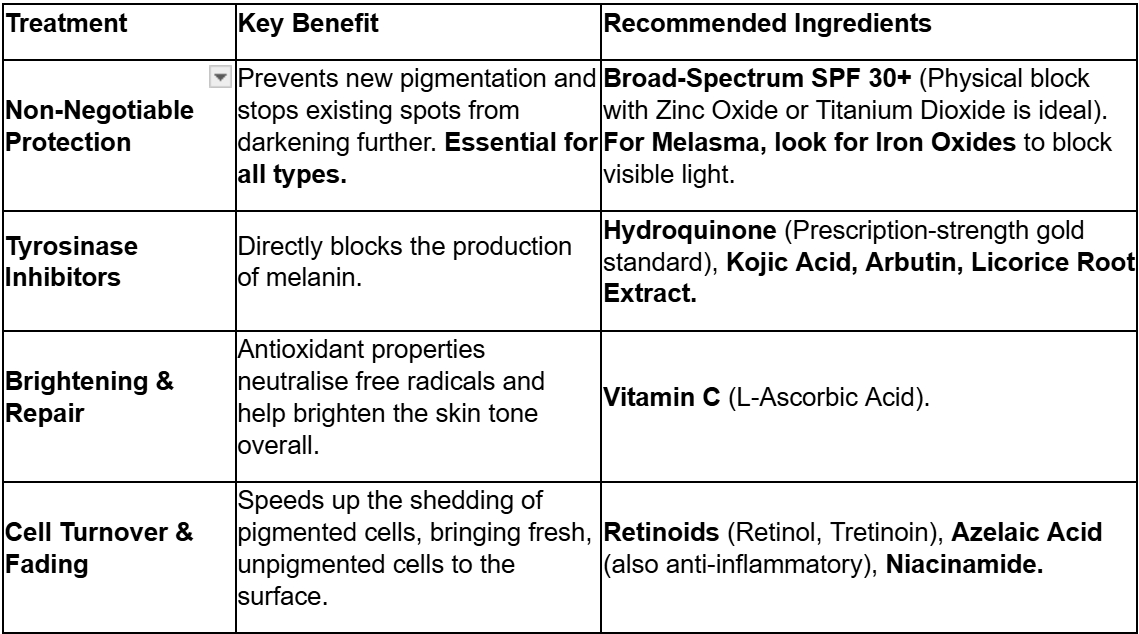
🔬 Professional & In-Clinic Treatments
These treatments deliver targeted energy or chemical exfoliation to break up and lift stubborn pigment.
💡 Our Recommendation
Treating pigmentation requires patience and a personalised plan. We recommend prioritising strict daily sun protection and layering highly effective tyrosinase inhibitors (such as a professional-grade serum) with in-clinic Peel or Laser treatments to expedite the clearing process and restore a brighter, more uniform complexion.
Ready to achieve an even, radiant skin tone?
Schedule a consultation with our specialists to diagnose your specific type of pigmentation and develop a safe, effective treatment program.

Calming the Flush: Understanding and Managing Redness and Rosacea
Skin redness, often characterised by persistent flushing, visible broken capillaries, and generalised sensitivity, is a very common concern. While mild redness can be a simple sign of irritation, chronic facial redness is frequently attributed to a condition called Rosacea.
Understanding the difference between temporary flushing and a chronic inflammatory condition like Rosacea is crucial for effective management and long-term relief.
🧐 What Causes Facial Redness and Rosacea?
The root cause of chronic redness and Rosacea is complex, involving genetics, environmental factors, and an overly reactive immune system.
1. Vascular Hyper-Reactivity
2. Inflammation and Immune Response
3. Key Triggers for Rosacea
While Rosacea is a chronic condition, its symptoms are often worsened by specific environmental and internal factors:
✨ Effective Treatment Options
The primary goal of treating redness and Rosacea is to reduce inflammation, minimise vascular visibility, and strengthen the skin's protective barrier.
🧴 Daily Skincare Solutions (Topicals)
A gentle, barrier-repairing routine is essential, coupled with calming and specific medicinal ingredients:
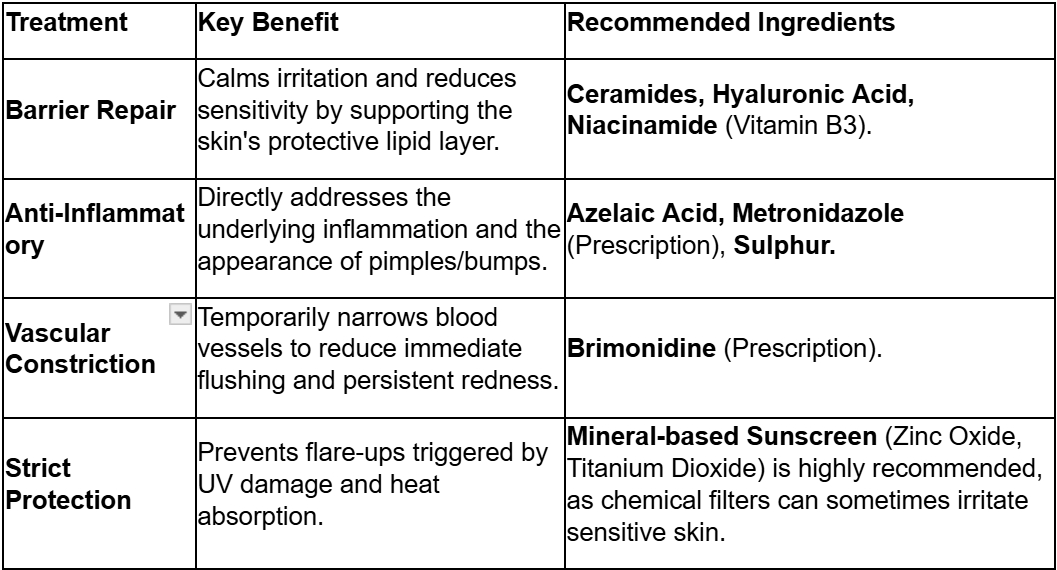
🔬 Professional & In-Clinic Treatments
For addressing persistent, visible vascular issues, technology offers the most dramatic results:
💡 Our Recommendation
Managing Rosacea is about control, not cure. We realise that a phased approach is best: Phase 1 involves an initial consultation to identify your triggers and establish a gentle, consistent barrier-repair skincare routine. Phase 2 incorporates targeted, low-irritation actives (like Azelaic Acid). Phase 3 introduces professional treatments, such as a course of Vascular Laser sessions, to clear the persistent redness and broken capillaries for long-lasting cosmetic improvement.
Ready to soothe your skin and control your flush?
Book a consultation with our skin health experts today to discuss your redness concerns and begin a journey toward a calmer, clearer complexion.

Understanding and Treating Open or Enlarged Pores
Open or enlarged pores are a common skin concern. While pores are essential structures that allow sebum (natural oils) and sweat to reach the skin's surface, when they appear larger than desired, it's often due to a combination of factors. Understanding the causes is the first step toward finding effective treatment.
🧐 What Causes Enlarged Pores?
The sise of your pores is primarily determined by genetics, but several other factors can contribute to them becoming more visible or enlarged:
✨ Effective Treatment Options
Fortunately, there are many highly effective ways to manage and minimise the appearance of enlarged pores.
🧴 Daily Skincare Solutions (Topicals)
Consistency is key for managing enlarged pores at home:
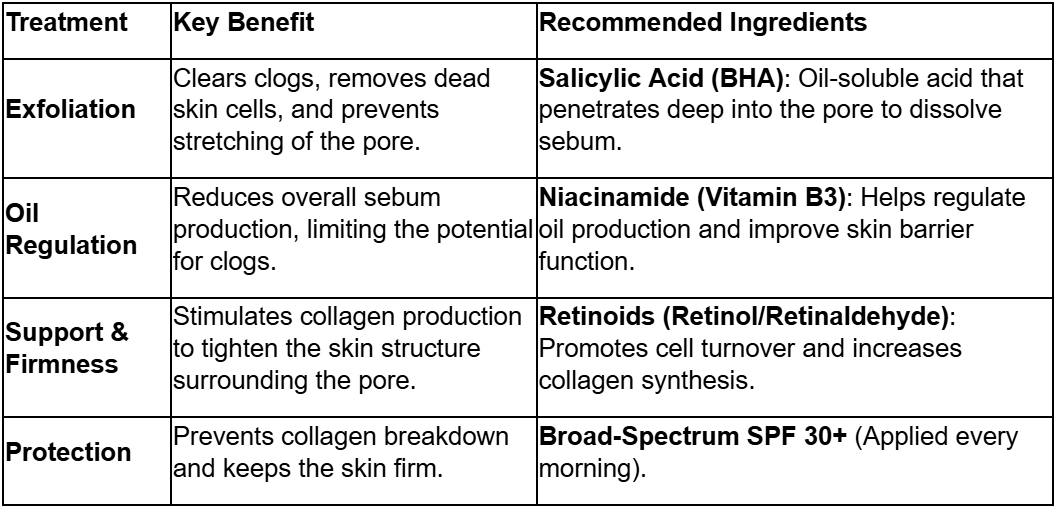
🔬 Professional & In-Clinic Treatments
For more noticeable results, professional treatments can offer deeper exfoliation and significant collagen stimulation:
💡 Our Recommendation
To achieve the best results, we recommend a combined approach: consistent use of targeted active skincare ingredients (like Salicylic Acid and Retinoids) alongside a customised course of in-clinic treatments (such as laser treatment) for deeper rejuvenation and lasting pore refinement.
Ready to start your journey to smoother skin? Book a consultation with one of our skin specialists today to determine the exact cause of your enlarged pores and create a personalised treatment plan.